Theoretical Condensed Matter/Atomic Molecular Optical Physics
Ceyhun Bulutay
Theoretical quantum optics and sensing, optomechanics, non-Hermitian physics
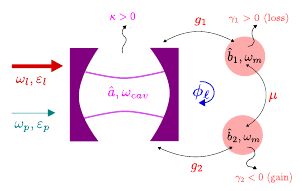
Selected Publications:
- E. T. Güldeste, C. Bulutay, “Wavelet resolved coherence beating in the Overhauser field of a thermal nuclear spin ensemble,” Physical Review B, vol. 105, 075202 (2022)
- B. Sütlüoğlu, C. Bulutay, “Static synthetic gauge field control of double optomechanically induced transparency in a closed-contour interaction scheme,” Physical Review A, vol. 104, 033504 (2021)
- M. Kahraman, C. Bulutay, “Electron ground state g factor in embedded InGaAs quantum dots: An atomistic study,” Physical Review B, vol. 103, 115303 (2021)
Şahin Büyükdağlı
Statistical physics of charged and polar liquids, ion channels, electrostatics of polymer translocation, statistical physics of DNA melting, critical phenomena, biophysical modelling.
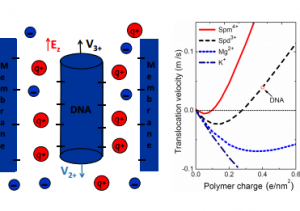
Selected Publications:
- S. Buyukdagli, “Electrostatic interactions in charged nanoslits within an explicit solvent theory”, Journal of Physics : Condensed Matter 27, 455101 (2015).
- S. Buyukdagli, “Dielectric anisotropy in polar solvents under external fields”, Journal of Statistical Mechanics P08022 (2015).
- S. Buyukdagli, Ralf Blossey, and T. Ala-Nissila, “Ionic current inversion in pressure-driven polymer translocation through nanopores”, Physical Review Letters 114, 088303 (2015).
- S. Buyukdagli and T. Ala-Nissila, “Controlling electrophoretic polymer translocation via charge correlations”, Langmuir 30, 12907 (2014).
- S. Buyukdagli and Ralf Blossey, “Dipolar correlations in structured solvents under nanoconfinement”, Journal of Chemical Physics 140, 234903 (2014).
- S. Buyukdagli and Ralf Blossey, “On the Continuum Theory of Structured Coulomb Fluids”, Journal of Physics : Condensed Matter 26, 285101 (2014).
- S. Buyukdagli and T. Ala-Nissila, “Electrostatic correlations on the ionic selectivity of cylindrical membrane nanopores”, Journal of Chemical Physics 140, 064701 (2014).
- S. Buyukdagli and T. Ala-Nissila, “Alteration of gas phase ion polarizabilities upon hydration in high dielectric liquids”, Journal of Chemical Physics 139, 044907 (2013).
- S. Buyukdagli and T. Ala-Nissila, “Microscopic formulation of non-local electrostatics in polar liquids embedding polarizable ions”, Physical Review E 87, 063201 (2013).
- S. Buyukdagli, C.V. Achim, and T. Ala-Nissila, “Electrostatic correlations in inhomogeneous charged fluids beyond loop expansion”, Journal of Chemical Physics 137, 104902 (2012).
- S. Buyukdagli and T. Ala-Nissila, “Dipolar depletion effect on the differential capacitance of carbon based materials”, Europhysics Letters 98, 60003 (2012).
- S. Buyukdagli and T. Ala-Nissila, “Excluded volume effects in macromolecular forces and ion-interface interactions”, Journal of Chemical Physics 136, 074901 (2012).
Oğuz Gülseren
Theoretical Condensed Matter Physics, Nanoscience, Graphene, Solar cells, Plasmonics, Metal nanowires, carbon nanotubes, electronic structure of solids, material properties from first principles.

Selected Publications:
- Hatice Ünal, Oğuz Gülseren, Şinasi Ellialtıoğlu, and Ersen Mete, Electronic structures and optical spectra of thin anatase TiO2 nanowires through hybrid density functional and quasiparticle calculations, Physical Review B 89, 205127 (2014)
- Jiwuer Jilili, Ayjamal Abdurahman, Oğuz Gülseren and Udo Schwingenschlögl, Non-covalent functionalization of single wall carbon nanotubes and graphene by a conjugated polymer, Applied Physics Letters 105, 013103 (2014).
- M. Can Günendi, İrem Tanyeli, Gürsoy B. Akgüç, Alpan Bek, Raşit Turan, and O. Gülseren, Understanding the plasmonic properties of dewetting formed Ag nanoparticles for large area solar cell applications, Optics Express 21, 18344-18353 (2013).
- Ruslan Hummatov, Daniele Toffoli, O. Gülseren, Emrah Özensoy, Hande Üstünel, First-principles investigation of NOx and SOx adsorption on anatase-supported BaO and Pt overlayers, Journal Physical Chemistry C 116, 6191-6199 (2012).
- Selcen İslamoğlu, M. Ö. Oktel and O. Gülseren; Hofstadter butterfly of graphene with point defects, Physical Review B 85, 235414 (2012).
- Deniz Çakır, O. Gülseren, Adsorption of Pt and bimetallic Pt-Au clusters on the partially reduced rutile (110) TiO2 surface: A first-principles study, Journal Physical Chemistry C 116, 5735-5746 (2012).
- Gursoy B. Akguc, O. Gülseren, Thermoelectric Efficiency of nanowires with long range surface disorder, Physical Review B 85, 075432 (2012).
- M. F. Genişel, Md. N. Uddin, Z. Say, M. Kulakci, R. Turan, O. Gülseren, E. Bengu, Bias in bonding behavior among boron, carbon, and nitrogen atoms in ion implanted BNx, BCx, and diamond like carbon films, Journal of Applied Physics 110, 074906 (2011).
- D. Çakır, O. Gülseren; Effect of impurities on the mechanical and electronic properties of Au, Ag, and Cu monatomic chain nanowires, Physical Review B 84, 085450 (2011).
- D. Çakır, O. Gülseren, E. Mete, Ş. Ellialtıoğlu; Interaction of BrPDI, BrGly, and BrAsp with the Rutile TiO(2)(110) Surface for Photovoltaic and Photocatalytic Applications: A First-Principles Study, Journal Of Physical Chemistry C 115, 9220-9226 (2011).
- G. Kucukayan, R. Ovali, S. Ilday, B. Baykal, H. Yurdakul, S. Turan, O. Gülseren, E. Bengu; An experimental and theoretical examination of the effect of sulfur on pyrolytically grown carbon nanotubes from sucrose-based solid state precursors, Carbon 49, 508-517 (2011).
Aydın Cem Keser
Electron transport and electrodynamic properties of quantum materials, mesoscopic systems, stochastic and disordered many-body physics
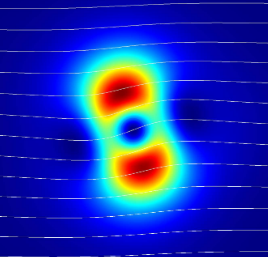
Selected Publications:
- R. Afrose, A. C. Keser, O. P. Sushkov, S. Adam, Tunable viscous layers in Corbino geometry using density junctions, Physical Review B 110, 125409 (2024).
- J. Engdahl, A. C. Keser, O. P. Sushkov, Driving viscous hydrodynamics in bulk electron flow in graphene using micromagnets, Physical Review B 109, 195402 (2024).
- A. C. Keser, O. P. Sushkov, Magnetic response of a two-dimensional viscous electron fluid, Turkish Journal of Physics 47, 28–39 (2023).
- J. Engdahl, A. C. Keser, O. P. Sushkov, Micromagnets dramatically enhance effects of viscous hydrodynamic flow in two-dimensional electron fluid, Physical Review Research 4, 043175 (2022).
- A. C. Keser, Y. Lyanda-Geller, O. P. Sushkov, Nonlinear Quantum Electrodynamics in Dirac materials, Physical Review Letters 128, 066402 (2022).
- A. C. Keser, D. Q. Wang, O. Klochan, D. Y. H. Ho, O. A. Tkachenko, V. A. Tkachenko, D. Culcer, S. Adam, I. Farrer, D. A. Ritchie, O. P. Sushkov, A. R. Hamilton, Geometric control of universal hydrodynamic flow in a two-dimensional electron fluid, Physical Review X 11, 031030 (2021).
- D. Culcer, A. C. Keser, Y. Li, G. Tkachov, Transport in two-dimensional topological materials: recent developments in experiment and theory, 2D Materials 7, 022007 (2020).
- A. C. Keser, R. Raimondi, D. Culcer, Sign change in the anomalous Hall effect and strong transport effects in a 2D massive Dirac metal due to spin-charge correlated disorder, Physical Review Letters 123, 126603 (2019).
- A. C. Keser, V. M. Galitski, Analogue Stochastic Gravity in Strongly-Interacting Bose-Einstein Condensates, Annals of Physics 395, 84–111 (2018).
- A. C. Keser, S. Ganeshan, G. Refael, V. M. Galitski, Dynamical many-body localization in an integrable model, Physical Review B 94, 085120 (2016).
- A. C. Keser, V. Stanev, V. M. Galitski, Long range p-wave proximity effect into a disordered metal, Physical Review B 91, 094518 (2015).
- A. C. Keser, T. M. Antonsen, G. S. Nusinovich, D. G. Kashyn, K. L. Jensen, Heating of microprotrusions in accelerating structures, Physical Review ST Accelerators and Beams 16, 092001 (2013).
Personal/Research Website
M. Özgür Oktel
Bose-Einstein condensation, Spinor Quantum Gases, Optical properties of Atomic Gases, One dimensional quantum fluids.
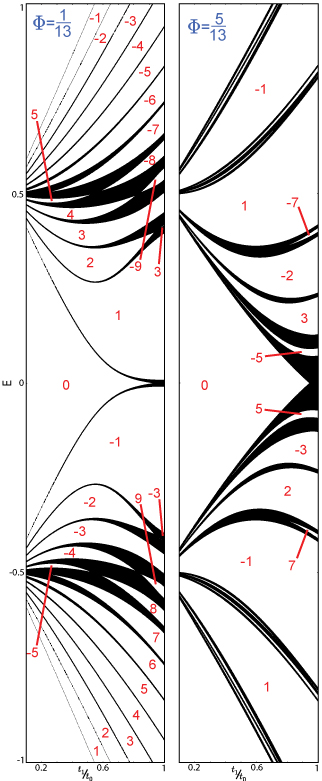
Selected Publications:
- F. Yılmaz, F. Nur Ünal, and M. Ö. Oktel, “Evolution of the Hofstadter butterfly in a tunable optical lattice”, Phys. Rev. A 91, 063628 (2015).
- F. Nur Ünal, B. Hetényi, and M. Ö. Oktel, “Impurity coupled to an artificial magnetic field in a Fermi gas in a ring trap”, Phys. Rev. A 91, 053625 (2015).
- N. Ghazanfari, M.O. Oktel, “Rapidly rotating fermions in an anisotropic trap,” European Physical Journal D, vol. 59, pp. 435-441 (2010)
- M.E. Tasgin, M.O. Oktel, L. You, O.E. Mustecaplioglu, “Quantum Entanglement via Superradiance of a Bose Einstein Condensate,” Laser Physics, vol. 20, pp. 700-708 (2010)
- M.E. Tasgin, B. Oztop, M.O. Oktel, O.E. Mustecaplioglu, “Quantum Correlations Among Superradiant Bose-Einstein Condensate Atoms,” Optics & Spectroscopy, vol. 108, pp. 433-437 (2010)
- H. Zhai, R.O. Umucalilar, M.O. Oktel, “Pairing and Vortex Lattices for Interacting Fermions in Optical Lattices with a Large Magnetic Field,” Physical Review Letters, vol. 104, pp. 145301-1–3 (2010)
- B. Oztop, M.O. Oktel, O.E. Mustecaplioglu, L. You, “Quantum entanglement of spin-1 bosons with coupled ground states in optical lattices,” J of Physics B-Atomic Molecular & Optical Physics, vol. 42, pp. 145505-1–9 (2009)
- B. Oztop, M.O. Oktel, O.E. Mustecaplioglu, “Quantum Correlations of Spin-1 Atoms in an Optical Lattice,” Laser Physics, vol. 19, pp. 625-631 (2009)
- M.E. Tasgin, M.O. Oktel, L. You, O.E. Mustecaplioglu, “Quantum correlated light pulses from sequential superradiance of a condensate[reprinted in Vir.J. Quantum Inf. / vol.9],” Physical Review A, vol. 79, pp. 053603-1–10 (2009)
- M.E. Tasgin, O.E. Mustecaplioglu, M.O. Oktel, “Vortex Lattice of a Bose -Einstein Condensate as a Photonic Band Gap Material,” Laser Physics, vol. 19, pp. 647-654 (2009)
- R.O. Umucalilar, M.O. Oktel, “p band in a rotating optical lattice,” Physical Review A, vol. 78, pp. 033602-1–7 (2008)
- R.O. Umucalilar, H. Zhai, M.O. Oktel, “Trapped Fermi Gases in Rotating Optical Lattices: Realization and Detection of the Topological Hofstadter Insulator,” Physical Review Letters, vol. 100, pp. 070402-1–4 (2008)
Hâldun Sevinçli
Condensed matter physics (theory and simulation), quantum transport, nano-electronics, spintronics,magnetotransport, thermoelectrics, phononics, quantum thermal transport.
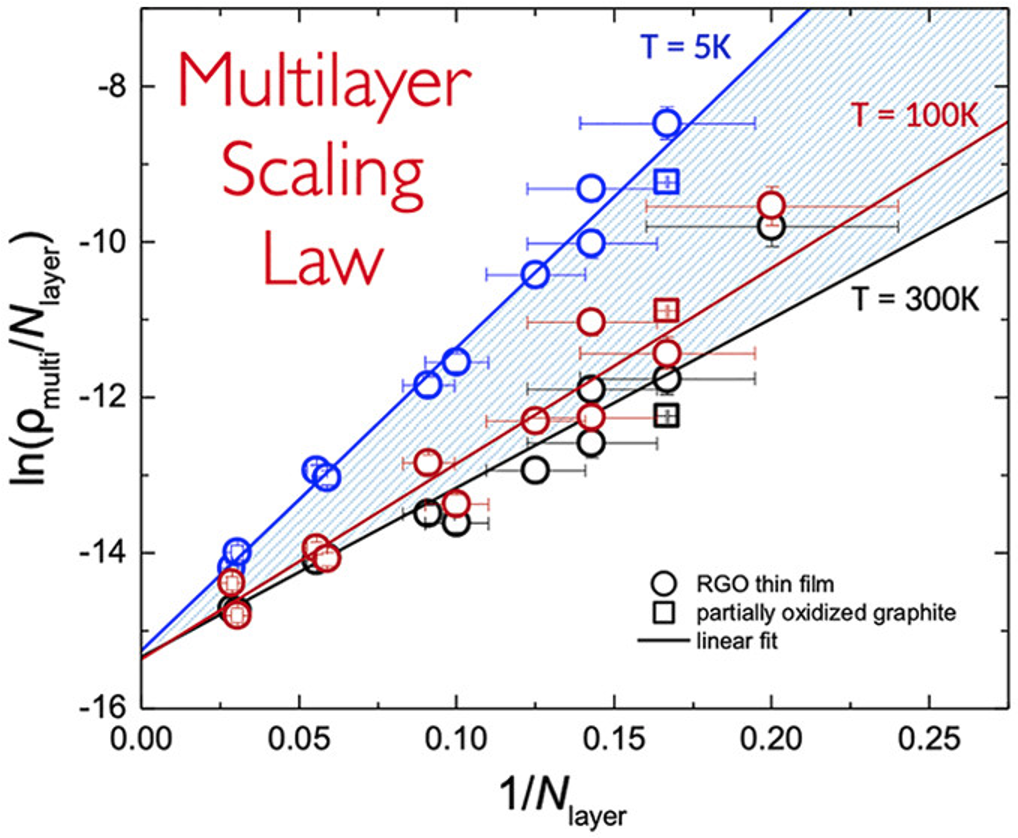
Selected Publications:
- Mustafa Neşet Çınar, Aleandro Antidormi, Viet-Hung Nguyen, Alessandro Kovtun, Samuel Lara-Avila, Andrea Liscio, Jean-Christophe Charlier, Stephan Roche, and Hâldun Sevinçli, “Toward Optimized Charge Transport in Multilayer Reduced Graphene Oxides”, Nano Letters 22, 2202 (2022)
- E. Unsal, R. T. Senger, and H. Sevinçli, “Enhancement of thermoelectric efficiency of T−HfSe2 via nanostructuring”, Phys. Rev. B 103, 014104 (2021)
- G. Özbal, R. T. Senger, C. Sevik, and H. Sevinçli, “Ballistic thermoelectric properties of monolayer semiconducting transition metal dichalcogenides and oxides”, Phys. Rev. B 100, 085415 (2019)
- B. Ozdamar, G. Ozbal, M. N. Cinar, K. Sevim, G. Kurt, B. Kaya, H. Sevinçli, “Structural, Vibrational and Electronic Properties of Single Layer Hexagonal Crystals of Groups IV and V”, Phys. Rev. B 98, 045431 (2018)
- L.M. Sandonas, H. Sevinçli, R. Gutierrez, G. Cuniberti, “First-Principle-Based Phonon Transport Properties of Nanoscale Graphene Grain Boundaries”, Advanced Science, 1700365 (2017)
- H. Sevinçli, “Quartic Dispersion, Strong Singularity, Magnetic Instability, and Unique Thermoelectric Properties in Two-Dimensional Hexagonal Lattices of Group-VA Elements”, Nano Letters 17, 2589 (2017)
- H. Sevinçli, M. Brandbyge, “Phonon scattering in graphene over substrate steps”, App. Phys. Lett. 105, 153108 (2014)
- C. Sevik, H. Sevinçli, G. Cuniberti, and T. Cagin, “Phonon Engineering in Carbon Nanotubes by Controlling Defect Concentration”, Nano Lett. 11, 4971 (2011)
- W. Li, H. Sevinçli, S. Roche, and G. Cuniberti, “Efficient linear scaling method for computing the thermal conductivity of disordered materials”, Phys. Rev. B 83, 155416
- H. Sevinçli and G. Cuniberti, “Enhanced thermoelectric figure of merit in edge disordered zigzag graphene nanoribbons”, Phys. Rev. B 81, 113401 (2010)
Bilal Tanatar
Theoretical Condensed Matter Physics, Nanoscience, Graphene, Solar cells, Plasmonics, Metal nanowires, carbon nanotubes, electronic structure of solids, material properties from first principles.
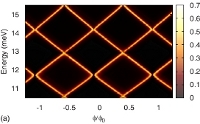
Selected Publications:
- V. Moldeveanu, B. Tanatar, “Tunable spin currents in a biased Rashba ring,” Physical Review B, vol. 81, pp. 035326 (2010)
- V. Moldoveanu, B. Tanatar, “Inelastic transitions and counterflow tunneling in double-dot quantum ratchets,” Physical Review B, vol. 82, pp. 205312 (2010)
- V. Moldoveanu, B. Tanatar, “Spin splitter regime of a mesoscopic Rashba ring,” Physics Letters A, vol. 375, pp. 187-191 (2010)
- A.L. Subasi, S. Sevincli, P. Vignolo, B. Tanatar, “Dimensional crossover in two-dimensional Bose-Fermi mixtures,” Laser Physics, vol. 20, pp. 683-693 (2010)
- A.L. Subasi, P. Pieri, G. Senatore, B. Tanatar, “Stability of Sarma phases in density imbalanced electron-hole bilayer systems,” Physical Review B, vol. 81, pp. 075436 (2010)
- M. Tas, B. Tanatar, “Plasmonic contribution to the van der Weals energy in strongly interacting bilayers,” Physical Review B, vol. 81, pp. 115326-1–7 (2010)
- R. Asgari, T. Gokmen, B. Tanatar, M. Padmanabhan, M. Shayegan, “Effective mass suppression in a ferromagnetic two-dimensional electron liquid,” Physical Review B, vol. 79, pp. 235324-1–4 (2009)
- I.N. Askerzade, B. Tanatar, “Anisotropy of Critical Fields in MgB2: Two-Band Ginzburg-Landau Theory for Layered Superconductors,” Communications in Theoretical Physics, vol. 51, pp. 563-569 (2009)
- V. Oldoveanu, B. Tanatar, “Coulomb drag in parallel quantum dots,” Europhysics Letters, vol. 86, pp. 67004-1–6 (2009)
- V. Moldoveanu, I.V. Dinu, B. Tanatar, “Fano effect in a double T-shaped interferometer,” European Physical Journal B, vol. 67, pp. 231-238 (2009)
Cemal Yalabık
Statistical mechanics: dynamics of phase transitions and critical phenomena, quantum mechanical simulation of electronic devices.
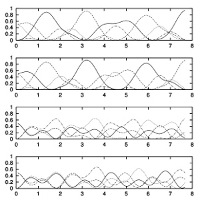
Selected Publications:
- C. Yalabik, “Nonlinear Schrodinger Equation for quantum computation,” Modern Physics Letters B, vol. 20, pp. 1099-1106 (2006)
- S. Taneri, C. Yalabik, “Finite size effects in cooperative molecular motors,” Physica A, vol. 337, pp. 291-303 (2003)
- S. Taneri, C. Yalabik, “Deformation in cooperative molecular motors,” European Physical Journal B, vol. 22, pp. 403-406 (2001)
- E. Kececioglu, M.C. Yalabik, “Time-dependent study of bistability in resonant-tunneling structures,” Physical Review B, vol. 59, pp. 2111- (1999)
- G.B. Akguc, M.C. Yalabik, “Hard spin mean field theory of three-dimensional stacked-triangular-lattice system,” Physical Review E, vol. 51, pp. 2636-2639 (1995)
- M.C. Yalabik, M.I. Ecemis, “A numerical implementation of absorbing and injecting boundary conditions for the time-dependent Schrodinger equation,” Physical Review B, vol. 51, pp. 2082-2086 (1995) (PDF)
- A. Kabakcioglu, A.N. Berker, M.C. Yalabik, “Closed form solutions and free energy of hard-spin mean-field theory of a fully frustrated system,” Physical Review E, vol. 49, pp. 2680-2683 (1994)
- M.C. Yalabik, “Electronic transport through a kink in an electron waveguide,” IEEE Trans on Elec Devices, vol. 41, pp. 1843-1847 (1994)
Experimental Condensed Matter/Atomic Molecular Optical Physics
Deniz Aybaş
Optical magnetometers, quantum magnetic sensors, precision measurements, axion dark matter searches.
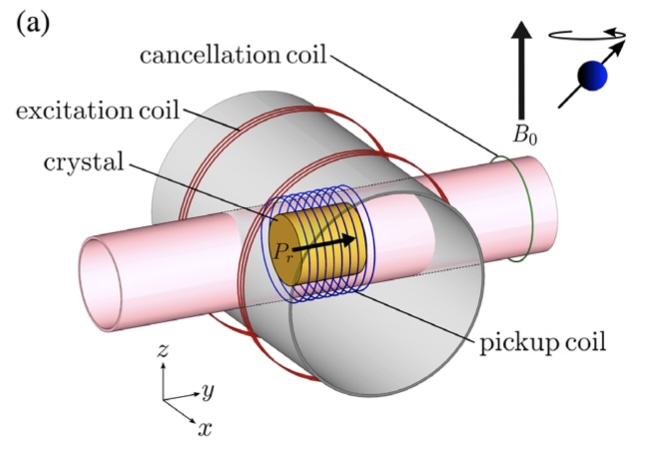
Selected Publications:
Hilmi Volkan Demir
Semiconductor optoelectronics and nanophotonics, quantum-confined colloidal structures including quantum dots and wells, solid-state lighting and LEDs, nanocrystal-based color conversion, display-backlighting color enrichment, energy transfer, optical gain in semiconductor nanocrystals.
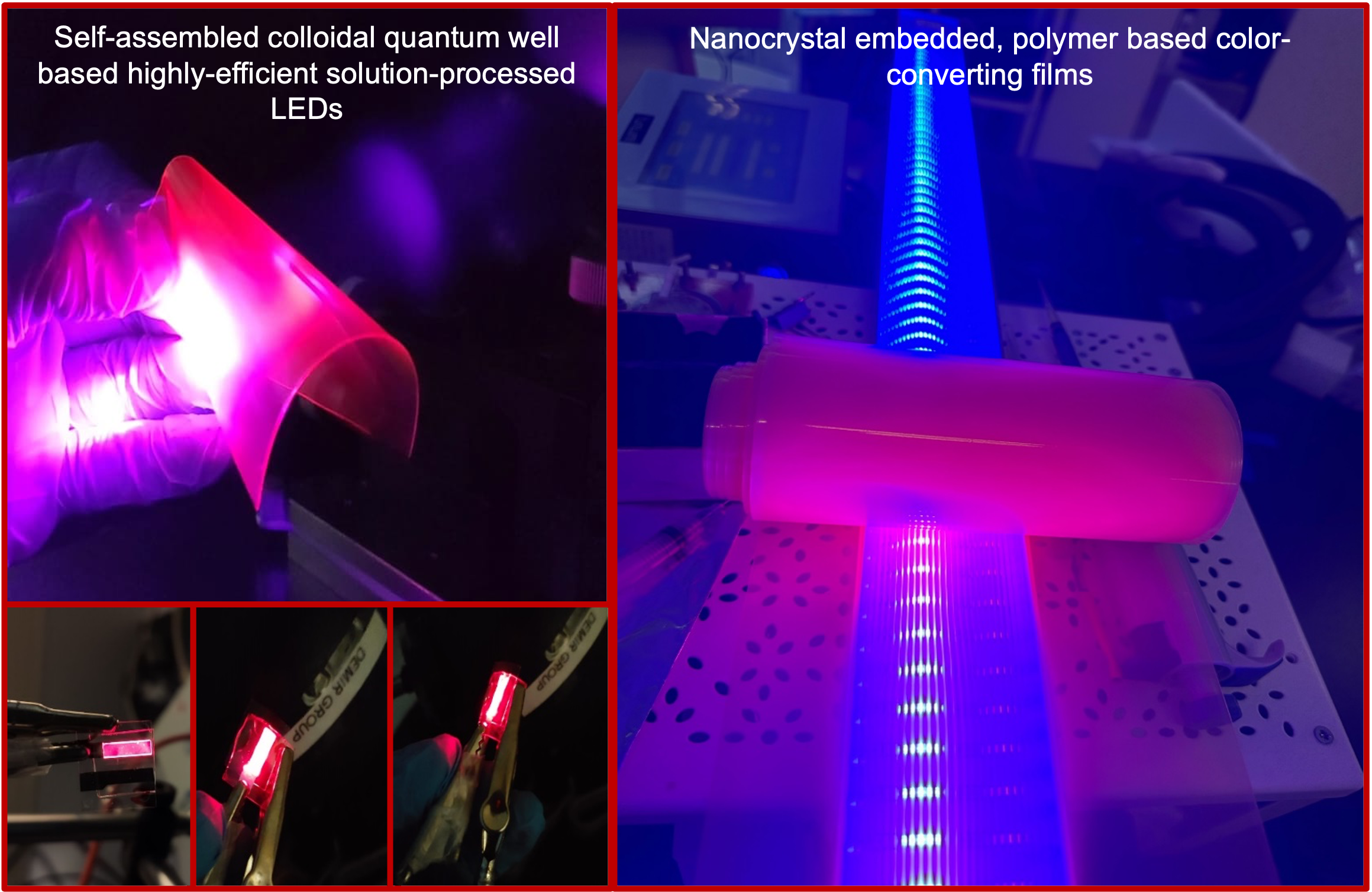
Selected Publications:
- E. G. Durmusoglu, S. Hu, P. L. Hernandez-Martinez, M. Izmir, F. Shabani, M. Guo, H. Gao, F. Isik, S. Delikanli, V. K. Sharma, B. Liu, and H. V. Demir “High External Quantum Efficiency Light-Emitting Diodes Enabled by Advanced Heterostructures of Type-II Nanoplatelets” ACS Nano 17, 7636 (2023).
- X. Liang, E. G. Durmusoglu, M. Lunina, P. L. Hernandez-Martinez, V. Valuckas, F. Yan, Y. Lekina, V. K. Sharma, T. Yin, S. T. Ha, Z. X. Shen, H. Sun, A. Kuznetsov, and H. V. Demir “Near-Unity Emitting, Widely Tailorable, and Stable Exciton Concentrators Built from Doubly Gradient 2D Semiconductor Nanoplatelets” ACS Nano 17, 19981 (2023).
- S. Delikanli, B. Canimkurbey, P. L. Hernandez-Martinez, F. Shabani, A. T. Isik, I. Ozkan, I. Bozkaya, T. Bozkaya, F. Isik, E. G. Durmusoglu, M. Izmir, H. Akgun, and H. V. Demir “On the Rational Design of Core/(multi)-crown Type-II Hetero-nanoplatelets” J. Am. Chem. Soc. 145, 12033 (2023).
- J. Maskoun, N. Gheshlaghi, F. Isik, S. Delikanli, O. Erdem, E. Y. Erdem, and H. V. Demir; “Optical Microfluidic Waveguides and Solution Lasers of Colloidal Semiconductor Quantum Wells” Advanced Materials 33, 2007131 (2021).
- B. Liu, Y. Altintas, L. Wang, S. Shendre, M. Sharma, H. Sun, E. Mutlugun, and H. V. Demir, “Record High External Quantum Efficiency of 19.2% Achieved in Light-Emitting Diodes of Colloidal Quantum Wells Enabled by Hot-Injection Shell Growth” Advanced Materials 32, 1905824 (2020).
- N. Taghipour, S. Delikanli, S. Shendre, M. Sak, M. Li, F. Isik, B. Guzelturk, T. C. Sum and H. V. Demir, “Sub-single exciton optical gain threshold in colloidal semiconductor quantum wells with gradient alloy shelling” Nature Comm. 11, 3305 (2020).
- O. Erdem, K. Gungor, B. Guzelturk, I. Tanriover, M. Sak, M. Olutas, D. Dede, Y. Kelestemur and H. V. Demir “Orientation-controlled nonradiative energy transfer in anisotropic nanocrystals of colloidal quantum wells: Engineering dipole orientation factor” Nano Letters 19, 4297 (2019).
- B. Guzelturk, M. Pelton, M. Olutas, and H. V. Demir, “Giant Modal Gain Coefficients in Colloidal II–VI Nanoplatelets” Nano Letters 19, 277 (2019).
- M. Sharma, K. Gungor, A. Yeltik, M. Olutas, B. Guzelturk, Y. Kelestemur, T. Erdem, S. Delikanli, J. R. McBride and H. V. Demir, “Near-Unity Emitting Copper-Doped Colloidal Semiconductor Quantum Wells for Luminescent Solar Concentrators” Advanced Materials 29, 1700821 (2017).
- B. Guzelturk, Y. Kelestemur, K. Gungor, A. Yeltik, M. Z. Akgul, Y. Wang, R. Chen, C. Dang, H. Sun and H. V. Demir “Stable and Low Threshold Optical Gain in CdSe/CdS Quantum Dots: All-Colloidal Frequency Up-Converted Laser” Advanced Materials 27, 2741 (2015).
Ekmel Özbay
Metamaterials and left-handed materials, photonic band gap materials, GaN based nanophotonic devices, high speed optoelectronic devices, high performance semiconductor laser diode, GaN MOCVD epitaxial growth, physics and applications of nanostructures, micro electro-mechanical devices, ultrafast phenomena, quantum optics.
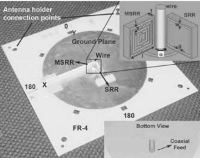
Selected Publications:
- K.B. Alici, A.E. Serebryannikov, E. Ozbay, “Radiation Properties and Coupling Analysis of a Metamaterial Based, Dual Polarization, Dual Band, Multiple Split Ring Resonator Antenna,” J of Electromagnetic Waves and Applications, vol. 24, pp. 1183-1193 (2010)
- K.B. Alici, F. Bilotti, L. Vegni, E. Ozbay, “Experimantal verification of metamaterial based subwavelength microwave absorbers,” J Applied Physics, vol. 108, pp. 083113-1–6 (2010) (PDF)
- K.B. Alici, E. Ozbay, “Metamaterial inspired enhanced far-field transmission through a subwavelength nano-hole,” Physica Status Solidi Rapid Research Letters, vol. 4, pp. 286-288 (2010)
- K.B. Alici, E. Ozbay, “Theoretical Study and Experimental Realization of a Low-Loss Metamaterial Operating at the Millimeter-Wave Regime: Demonstrations of Flat- and Prism-Shaped Samples,” IEEE J of Selected Topics in Quantum Electronics, vol. 16, pp. 386-393 (2010) (PDF)
- K.B. Alici, A.E. Serebryannikov, E. Ozbay, “Photonic magnetic metamaterial basics,” Photonics and Nanostructures, vol. , pp. (2010)
- E. Arslan, Y. Safak, I. Tascioglu, H. Uslu, E. Ozbay, “Frequency and temperature dependence of the dielectric and AC electrical conductivity in (Ni/Au)/AlGaN/AIN/GaN heterostructures,”Microelectronic Engineering, vol. 87, pp. 1997-2001 (2010)
- E. Arslan, S. Butun, Y. Safak, E. Ozbay, “Investigation of Trap States in AllnN/AIN/GaN Heterostructures by Frequency-Dependent Admittance Analysis,” J of Electronic Materials, vol. 39, pp. 2681-2686 (2010)
- E. Arslan, Y. Safak, S. Altindal, O. Kelekci, E. Ozbay, “Temperature dependent negative capacitance behavior in (Ni/Au)/AlGaN/AıN/GaN heterostructures,” J of Non-crystalline Solids, vol. 356, pp. 1006-1011 (2010)
- D. Ates, A.O. Cakmak, E. Colak, R. Zhao, C.M. Soukoulis, E. Ozbay, “Transmission enhancement through deep subwavelength apertures using connected split ring resonators,” Optics Express, vol. 18, pp. 3952-3966 (2010) (PDF)
- H. Caglayan, S. Cakmakyapan, S.A. Addae, M.A. Pinard, D. Caliskan, K. Aslan, E. Ozbay, “Ultrafast and sensitive bioassay using split ring resonator structures and microwave heating,”Applied Physics Letters, vol. 97, pp. 093701-1–3 (2010) (PDF)
Emre Ozan Polat
Optoelectronics and photonics of low dimensional materials, Flexible electronics and wearable applications of quantum materials, Synthesis and device applications of graphene and related materials, Photodetectors, Supercapacitors, Optical Modulators and Electrochromic Devices.
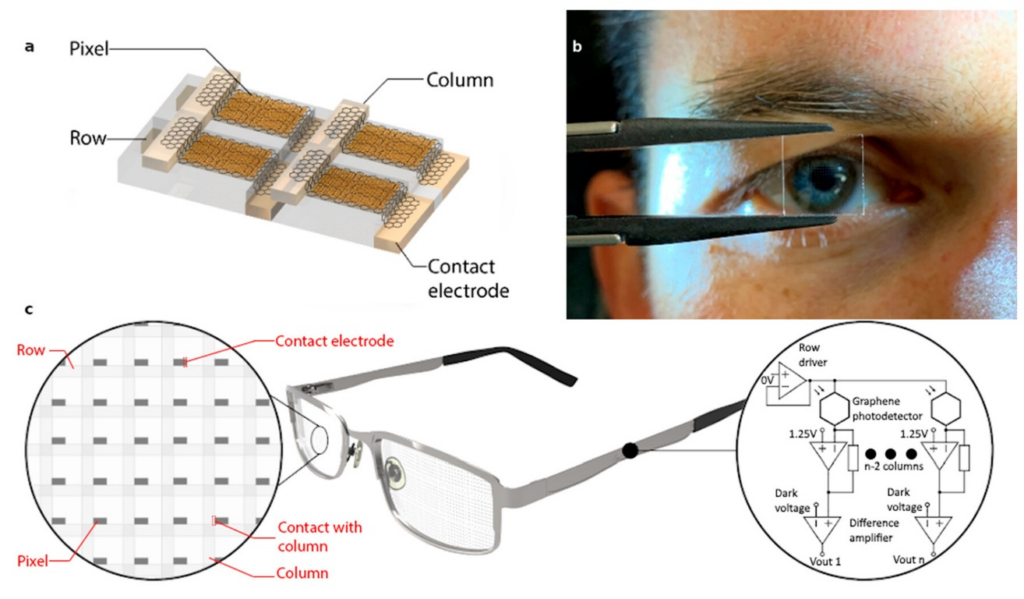
Selected Publications:
- G. Mercier*, E. O. Polat*, S. Shi*, S. Gupta, G. Konstantatos, S. Goossens, F. H. L. Koppens, “Semi-Transparent Image Sensors for Eye-Tracking Applications,” ACS Photonics, 10, 9, 2994–3000, 2023.https://doi.org/10.1021/acsphotonics.3c00473
(*Equal Contribution) - M. Günay, P. Das, E. Yüce, E. O. Polat, A. Bek, M. E. Tasgin, ‘‘On-demand continuous-variable quantum entanglement source for integrated circuits,’’ Nanophotonics, 12(2): 229-237, 2023. https://doi.org/10.1515/nanoph-2022-0555
- E. O. Polat, M. M. Cetin, A. F. Tabak, B. O. Uysal, E. Bilget Guven, T. Arsan, A. Kabbani, H. Hamed, ‘‘Transducer Technologies for Wearable Biosensors,’’ Biosensors, 12(6), 385, 2022.https://doi.org/10.3390/bios12060385
- E. O. Polat, ‘‘Seamlessly Integrable Optoelectronics for Clinical Grade Wearables,’’ Advanced Material Technologies, vol. 6, 2000853, 2021.
https://doi.org/10.1002/admt.202000853 - E. O. Polat, G. Mercier, I. Nikitskiy, E. Puma, T. Galan, S. Gupta, M. Montagut, J. J. Piqueras, M. Bouwens, T. Durduran, G. Konstantatos, S. Goossens, F. Koppens, ‘‘Flexible Graphene Photodetectors for Wearable Fitness Monitoring,’’ Science Advances, vol. 5, no. 9, eaaw7848, 2019. https://doi.org/10.1126/sciadv.aaw7846
- C. G. Núñez, W. T. Navaraj, E. O. Polat, and R. Dahiya, ‘‘Energy-Autonomous, Flexible, and Transparent Tactile Skin,’’ Advanced Functional Materials, vol. 27, 1606287, 2017. https://doi.org/10.1002/adfm.201606287
- E. O. Polat, H. B. Uzlu, O. Balci, N. Kakenov, E. Kovalska, and C. Kocabas, ‘‘Graphene-Enabled Optoelectronics on Paper,’’ ACS Photonics, vol. 3, no. 6, pp. 964–971, 2016. https://doi.org/10.1021/acsphotonics.6b00017
- E. O. Polat, O. Balci, N. Kakenov, H. B. Uzlu, C. Kocabas, and R. Dahiya, ‘‘Synthesis of Large Area Graphene for High Performance in Flexible Optoelectronic Devices,’’ Scientific Reports, vol. 5, Article number: 16744, 2015.https://doi.org/10.1038/srep16744
- E. O. Polat, O. Balcı, and C. Kocabas, ‘‘Graphene based flexible electrochromic devices,’’ Scientific Reports, vol. 4, Article number: 6484, 2014. https://doi.org/10.1038/srep06484
- E. O. Polat and C. Kocabas, ‘‘Broadband optical modulators based on graphene supercapacitors,’’ Nano Letters, vol. 13, no. 12, pp. 5851–7, 2013. https://doi.org/10.1021/nl402616t
Onur Tokel
Light-matter interaction physics, laser-initiated novel mechanisms, ultrafast laser lithography, laser patterning, 3D microfabrication, nanofabrication, photonic devices.
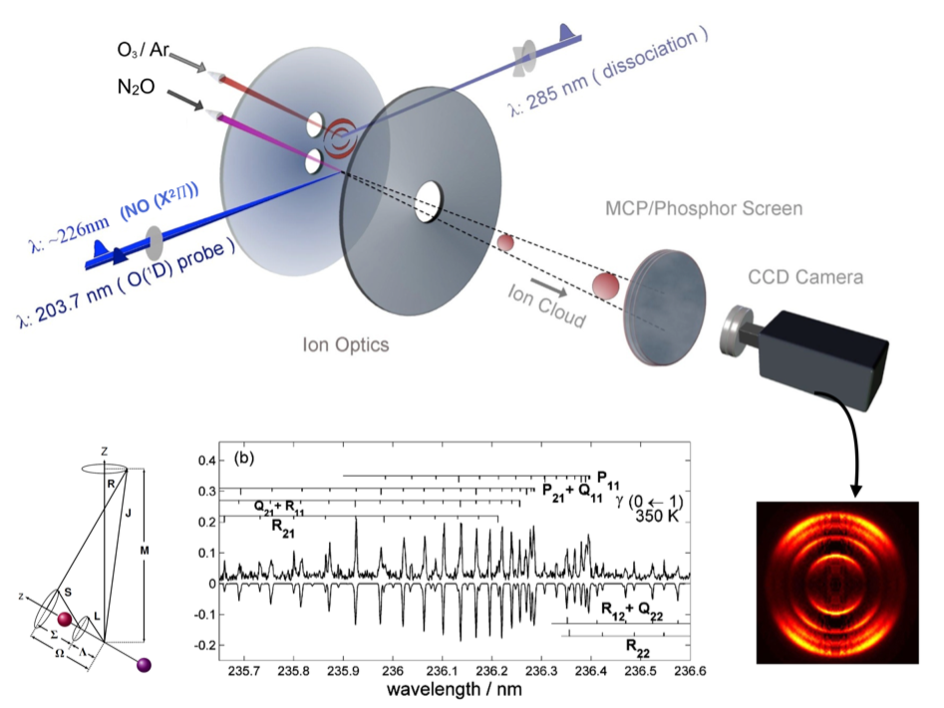
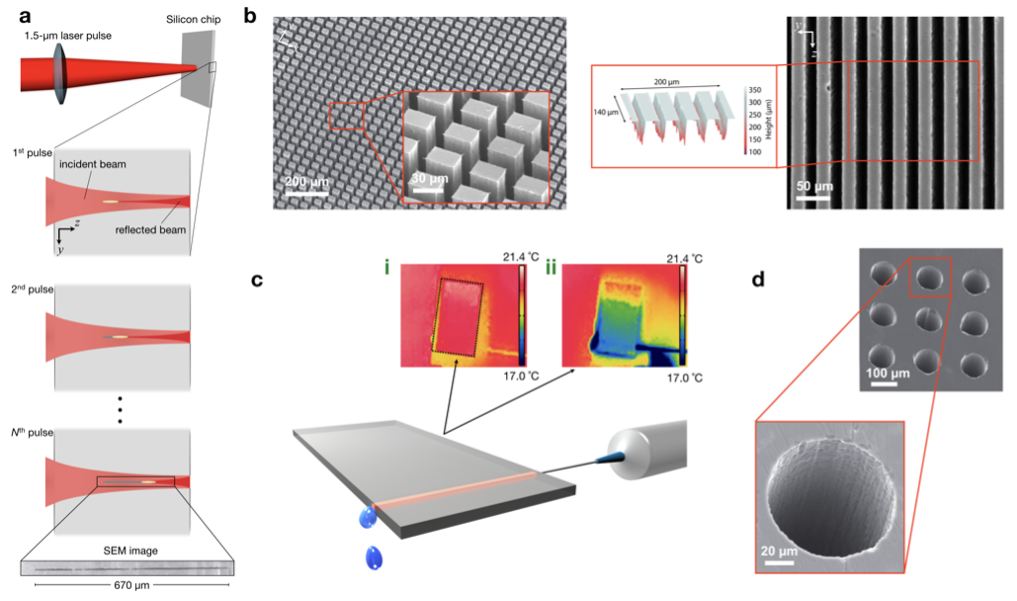
Selected Publications:
- R. A. Sabet, A. Ishraq, A. Saltik, M. Bütün, O. Tokel, “Laser nanofabrication inside silicon with spatial beam modulation and anisotropic seeding”, Nature Communications, 15, 5786, (2024).
- A. Saltik, O. Tokel, “Laser-written wave plates inside the silicon enabled by stress-induced birefringence”, Optics Letters, 49, 1, 49, (2024). Editor’s Pick.
- M. Bütün, S. Saylan, R. A. Sabet, O. Tokel, “High-efficiency multilevel volume diffraction gratings inside silicon”, ACS Materials Au, 3, 6, 727, (2023). Invited Paper.
- M. Chambonneau, D. Grojo, O. Tokel, F. Ö. Ilday, S. Tzortzakis, S. Nolte, “In-volume laser direct writing of silicon”, Laser & Photonics Reviews, 2100140, 2021. Highlighted on the cover.
- A. Turnali, M. Han, O. Tokel., “Laser-written depressed-cladding waveguides deep inside bulk silicon”, Journal of the Optical Society of America B, 36, 4, 966 (2019).
- G. Makey, Ö. Yavuz, D. K. Kesim, A. Turnalı, P. Elahi, S. Ilday, O. Tokel†, F. Ö. Ilday†, “Breaking crosstalk limits to dynamic holography using orthogonality of high-dimensional random vectors”, Nature Photonics, 13, 251, 2019. †corresponding author. Highlighted on the cover
- O. Tokel†, A. Turnalı, G. Makey, P. Elahi, T. Çolakoğlu, E. Ergeçen, Ö. Yavuz, R. Hübner, M. Z. Borra, I. Pavlov, A. Bek, R. Turan, D. Kesim, S. Tozburun, S. Ilday, F. Ö. Ilday., “In-chip microstructures and photonic devices fabricated by nonlinear laser lithography deep inside silicon”, Nature Photonics, 11, 639–645 (2017). †corresponding author.
- S. Ilday, G. Makey, G. Akguc, Ö. Yavuz, O. Tokel, I. Pavlov, O. Gulseren, F. Ö. Ilday, “Rich complex behaviour of self-assembled nanoparticles far from equilibrium”, Nature Communications, 8: 14942 (2017).
- O. Tokel, F. Inci and U. Demirci, “Advances in plasmonic technologies for point of care applications”, ACS Chemical Reviews, 114, 11, 5728 (2014).
- F. Inci†, O. Tokel†, S. Wang , U. Gurkan , S. Tasoglu, D. R. Kuritzkes , and U. Demirci, “Nanoplasmonic quantitative detection of intact viruses from unprocessed whole blood”, ACS Nano, 7, 6, 4733 (2013).
